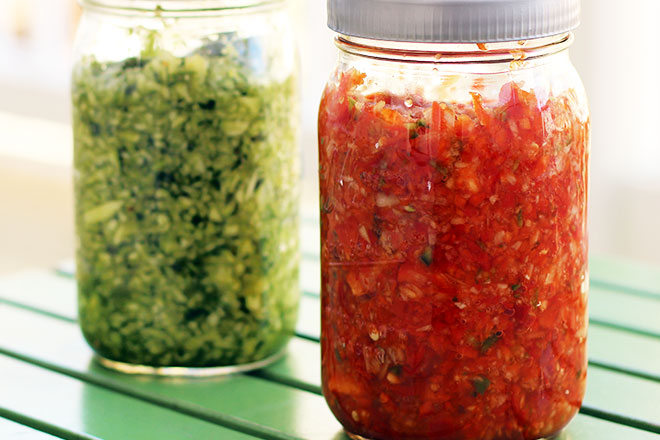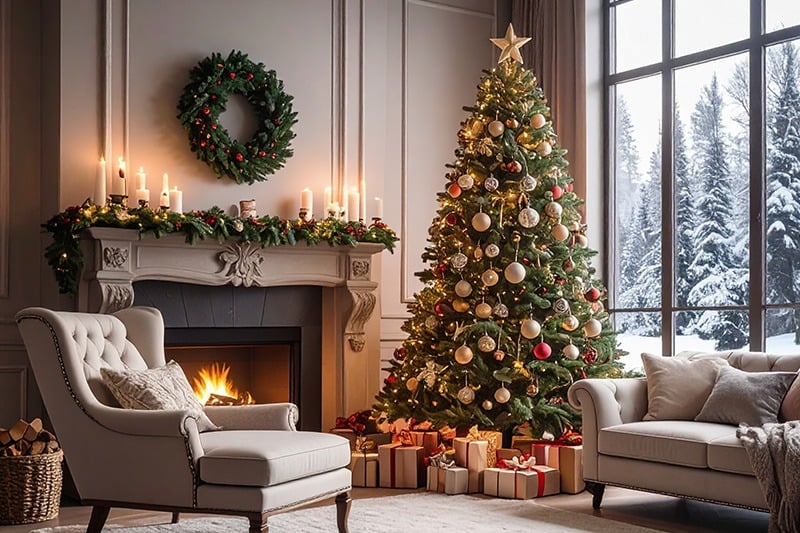You already know that fermented foods are good for you. And you probably already know that one of the reasons is because of the gut-friendly bacteria (probiotics) that are prevalent in fermented foods.
But there’s more to the story than just probiotics themselves.
The diversity of your gut flora is also very important. Diversity refers to the types of bacteria in your gut – and is there a good variety?
According to Dr. David Perlmutter, board certified neurologist and author of the best-selling book Grain Brain:
“The diet we choose is the most influential factor in terms of the health and diversity of the hundred trillion microbes that live within us. To be clear, these microbes play a pivotal role in determining our health destiny.”
Wow. That’s saying a lot.
What’s also important to note is that the amount of bacteria diversity also relates to resilience or your ability to fight off environmental threats. So if you want an ironclad immune system (don’t we all?), diversity is really important.
One simple way to increase biodiversity in your gut is by adding fermented foods to your diet.
You can buy fermented foods like kefir, kimchi and kombucha at the store. But it’s also really easy to make your own ferments at home.
When you make them at home you can also experiment with a wide variety of produce and really get creative.
When we first started fermenting our own food, we invested in 2 things that took a lot of the guesswork out of the process:
1- Fermented Vegetables by Christopher and Kirsten Shockey
I’ve seen a lot of books on fermented foods, but for some reason many of them don’t contain actual recipes. And if you’ve never fermented food before, it can be a long process between chopping the vegetables, putting them in the jar and then harvesting everything.
I mean, we’re talking a couple of weeks if not much longer. Since I’m not the kind of person that likes to waste money (or fresh produce) I really appreciated that this book has tons of very easy recipes.
They also do a great job of explaining the fermenting process which is very useful.
2- The FARMcurious Mold Free Fermenting Kit
I don’t like mold. And I know that lacto fermentation can produce mold. So to avoid ruining my fermented foods (and utterly grossing myself out), I invested in this fermenting kit from farmcurious.
The kit includes 2 of the grey lids and funny gadgets poking out at the top (see photo below). It doesn’t come with the mason jars, though. It’s well worth the investment to make sure that your fermented recipe turns out perfectly…with no mold!
I also find that the FARMcurious kit makes fermenting very forgiving.
For instance, I’ve made some mistakes in my ferments early on, but they always came out tasting great (and no mold!) because I use the FARMcurious kit.
You don’t need to have the fermenting kit, but if you do just be aware that it works with “wide-mouth” mason jars only. These are inexpensive and easy to find. Craft stores like Michael’s will have them.

Fermented Red Pepper Salsa
Description
Special Equipment Needed:
2- 16 oz. wide mouth mason jars
Food processor (unless you like mincing vegetables by hand :-))
FARMcurious Fermenting Kit, optional
Ingredients
- 1 ½ lb. red bell peppers (roughly chopped)
- 1 to 2 jalapenos (seeded and roughly chopped)
- 1 white or yellow onion (roughly chopped)
- 4 cloves garlic (minced)
- 2 tsp. Sea salt
Instructions
- Place the bell peppers, jalapenos and onions in the food processor and use the pulse function to mince. Add the mixture to a large bowl, add the garlic and sprinkle with the sea salt.
- Combine the ingredients well. You’ll notice that you’ll have a brine (salt and vegetable water) very quickly. Go ahead and taste the mixture. You want it to taste a little bit salty but you don’t want the salt to be overpowering. Feel free to add a bit more salt if needed.
- Next, you’re going to pack the mixture down into your mason jars. What you want is for the minced vegetables to be packed down as tightly as possible so that there’s brine above the veggies. The brine protects the veggies from getting moldy.
- To pack the veggies down to the bottom of the jar, I use my fist (clean hands of course) and push the vegetables down as far as they will go. I leave a few inches between the vegetables and the top of the jar.
- Put the lids on the jars.. If you’re using the FARMcurious set, add those. If you’re using regular wide-mouth mason jars, put those lids back on.
- Move your jars to a place where it’s cool and out of direct sunlight. I put ours in the pantry. You’re going to let the salsa ferment for 14 to 21 days. Keep checking throughout the weeks to make sure that there’s no mold and that the veggies stay below the brine (this is more important if you’re using regular mason jar lids).
- You can do a taste test as early as day 14. You’re looking for a punchy taste that’s pleasantly sour, but also has the acidity of salsa.
- To harvest the ferment, add it to smaller jars and press the vegetables below the brine. Place the lids on tight and refrigerate… for up to 2 years! It won’t last that long, though. Because it’s delicious.
Notes
We like to spoon this over eggs for breakfast in the morning or use it in a recipe wherever we would normally use salsa.










Curious to know what you thought of the article and fermented vegetables in general?